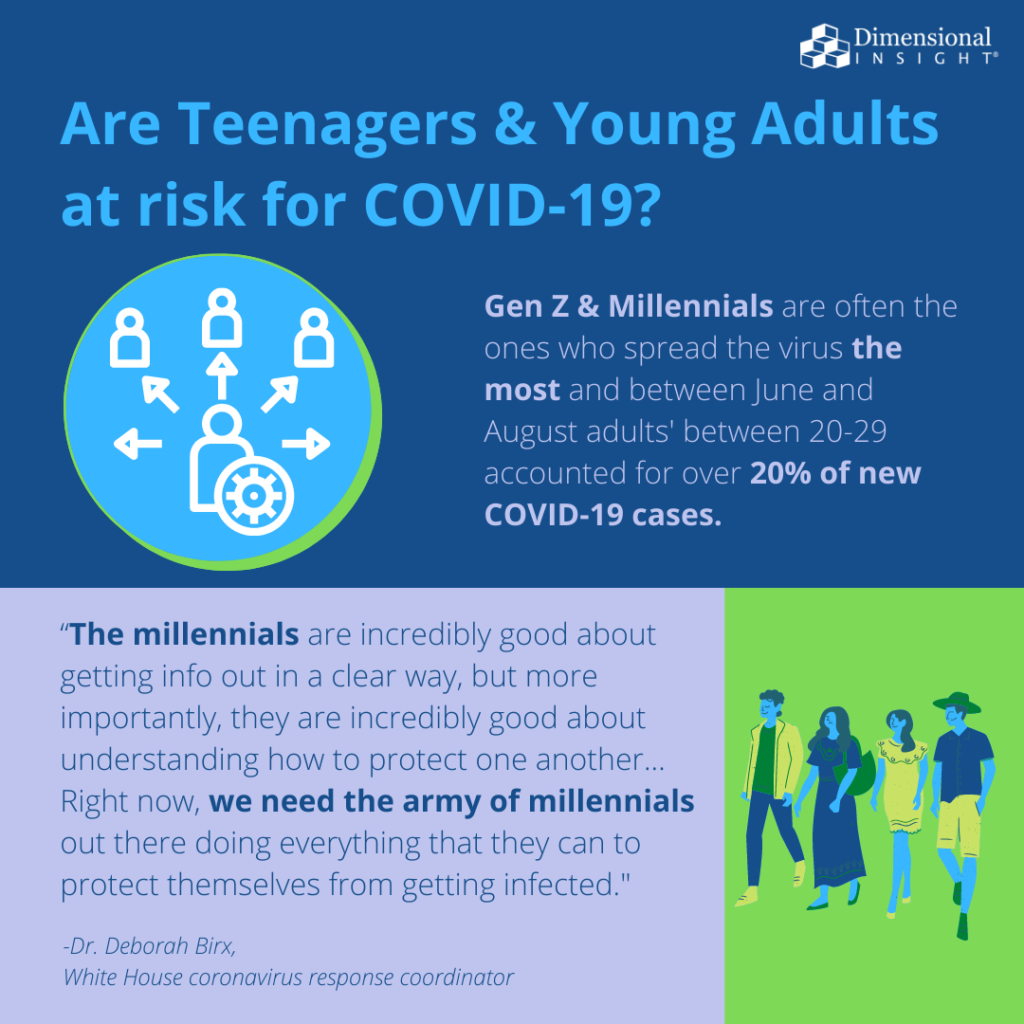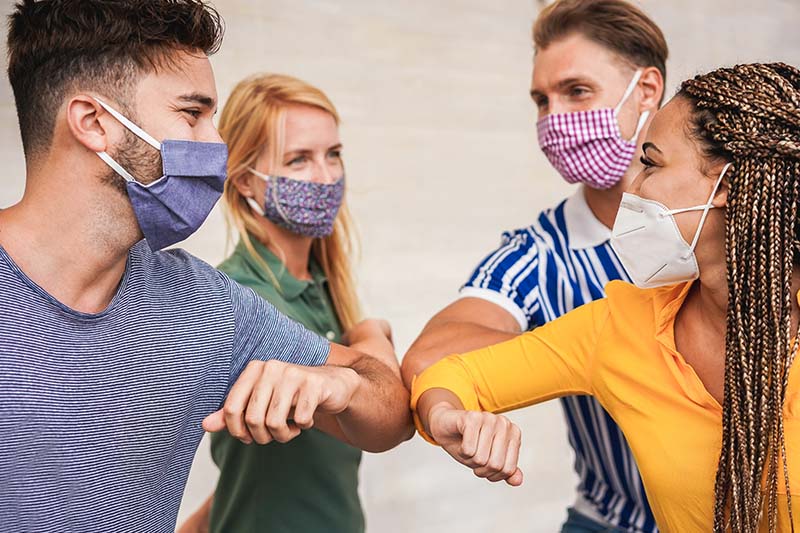In part one of “COVID-19 in Children and Young Adults,” we discussed the effects that COVID-19 has had on infants and young children. At the beginning of the pandemic the most affected populations, in terms of hospitalizations and deaths, were older adults and the elderly. As a result, news coverage and personal concern rarely focused on age groups such as infants and younger children, leaving many people blind to the negative effects that COVID-19 had on those age groups. In a similar but unfortunate situation, many teenagers and young adults seem to take the low hospitalization in their age group as an immunity card. In fact, individuals who identify as part of the Generation Z (born between 1997 and 2012) and millennial (born between 1981 and 1996, though the U.S. Census has said it includes those born between 1982 and 2000) age group are often the ones who spread the virus the most. Let’s take a look.
Spring break
Although there are many young adults who are taking the virus seriously and following designated safety regulations, it seems as though the rise in cases among the age group began around the time of spring break. While grade school spring break usually takes place for one week in April, college and university spring break is often longer and is one of the highlights of the school year. Students will often travel with friends or family, invading the beaches every day. However, this year, spring break began around the same time that most states put their stay-at-home orders in place, which “ruined” any travel plans for spring breakers – at least for those who wanted to stay safe.
Because of the quarantine order, airline tickets were extremely cheap and despite warnings of gathering in crowded settings, many people took advantage of the once-in-a-lifetime affordable airline ticket, especially those who were on a college budget. Over spring break, footage of extremely crowded Florida beaches flooded the news and most of the visible individuals were young adults in their 20s and 30s. In an interview, one Miami spring breaker even stated that, “If I get corona, I get corona. At the end of the day, I’m not going to let it stop me from partying… We’ve been waiting for Miami spring break for a while.”
Jawontae Rodgers, a 21-year-old who enjoyed his spring break in Panama City Beach this year, emphasized that he didn’t think the virus was a “big deal,” then added that, although it’s not impossible that he wouldn’t die from it, “I just don’t want to stop living my life because you only have one. YOLO: You only live once.”
Re-opening
Between spring break and mid-summer, cases continued to increase with no end in sight. However, some states did show progress as a result of mandatory business closures and home quarantining. This led to some re-openings, which gave hope to many individuals that they would still get to “have” their summer. However, the slow process of re-opening has had its negative side effects, such as young adults equating the re-openings to the virus no longer being a threat to society.
Dr. Joseph McCormick, an epidemiologist with the UT Health School of Public Health, said that new infections in people under the age of 35 have increased significantly since the re-opening of the economy, which accounts for more than half of the recent cases in his region. “We are seeing a resurgence of transmission, and it’s being driven by younger people… This is relatively new, and I think it’s because that segment of the population decided, ‘OK, I’m free,’ whereas the older group is thinking, ‘Woah, wait a minute, I’m still in jeopardy.’”
In fact, according to the U.S. Centers for Disease Control and Prevention, adults between ages 20 and 29 accounted for the greatest portion of new coronavirus cases – just over 20% – between June and August, which suggests that young adults are higher spreaders of the virus than scientists originally believed them to be. Those of younger age may have fewer symptoms than older adults and could even be asymptomatic, but that can be part of the problem. If young adults unknowingly have COVID-19, they’re more likely to continue going out to bars, restaurants, and workplaces, spreading it to everyone they come into contact with.
Risk
Although COVID-19 was well-known for affecting older adults and hospitalizing the elderly population, the disease can be fatal to individuals of any age. No one should let their guard down, regardless of how healthy they may be.
“The research letter from Harvard found that among 3,222 young adults hospitalized with COVID-19, 88 died (2.7%), one in five required intensive care, and one in 10 needed a ventilator to assist with breathing. Among those who survived, 99 patients (3%), could not be sent home from the hospital and were transferred to facilities for ongoing care or rehabilitation.” These numbers may sound small when compared with older adults who have suffered from the virus, but the numbers are only rising and the statistics make it clear that young people are not out of the woods.
Most recently, debate about the re-openings of schools and universities has surfaced among communities nationwide. One sophomore at Appalachian State University died from suspected COVID-19 complications and another student, Chase Sturgis, 21, tested positive but survived. Sturgis had been avoiding socializing over the summer, but once his university re-opened, he caved in and went out to a bar with his friends, the location from which it is believed he contracted the virus. It’s a difficult time for students who are going back to the “norm” by returning to campus and who want to socialize. But all it takes is going out once, letting your guard down for just a few hours or less, to put yourself and those around you at risk. “To this day I have no sense of taste of smell,” says Sturgis. However, Sturgis stated that it was “really, honestly scary” knowing that he and another student at his school, 19-year-old Chad Dorrill, were “sick around the same time, with similar symptoms and no known pre-existing conditions. ‘He died a week or two after he got the virus. It has been about two weeks for me.”

Stopping the spread
As the number of young people who test positive for coronavirus increases, it’s important to note that their age group is one of the keys to slowing down the spread. In an ABC News interview, White House coronavirus response coordinator Dr. Deborah Birx explained that, “The millennials are incredibly good about getting information out in a clear way, but more importantly, they are incredibly good about understanding how to protect one another, how to protect their parents, and how to protect their grandparents. Right now, we need the army of millennials out there doing everything that they can to protect themselves from getting infected because we know a lot of their cases will be mild or asymptomatic. The one effort we can have is every single American taking responsibility and making those sacrifices.”



